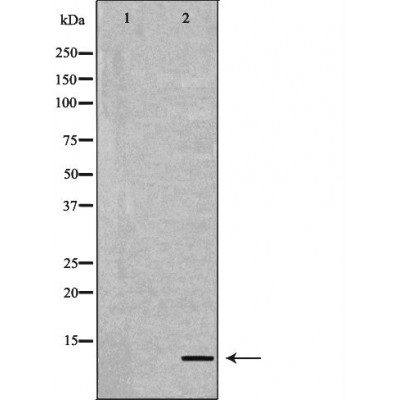APOC2 Antibody - #DF6607
| Product: | APOC2 Antibody |
| Catalog: | DF6607 |
| Description: | Rabbit polyclonal antibody to APOC2 |
| Application: | WB IHC |
| Reactivity: | Human, Mouse, Rat |
| Mol.Wt.: | 11kDa; 11kD(Calculated). |
| Uniprot: | P02655 |
| RRID: | AB_2838569 |
Related Downloads
Protocols
Product Info
*The optimal dilutions should be determined by the end user. For optimal experimental results, antibody reuse is not recommended.
*Tips:
WB: For western blot detection of denatured protein samples. IHC: For immunohistochemical detection of paraffin sections (IHC-p) or frozen sections (IHC-f) of tissue samples. IF/ICC: For immunofluorescence detection of cell samples. ELISA(peptide): For ELISA detection of antigenic peptide.
Cite Format: Affinity Biosciences Cat# DF6607, RRID:AB_2838569.
Fold/Unfold
APC 2; APC2; Apo CII; APOC 2; ApoC II; APOC2; APOC2 protein; APOC2_HUMAN; ApoCII; Apolipoprotein C II; Apolipoprotein C II precursor; Apolipoprotein C2; ApolipoproteinCII; MGC75082;
Immunogens
A synthesized peptide derived from human APOC2, corresponding to a region within the internal amino acids.
- P02655 APOC2_HUMAN:
- Protein BLAST With
- NCBI/
- ExPASy/
- Uniprot
MGTRLLPALFLVLLVLGFEVQGTQQPQQDEMPSPTFLTQVKESLSSYWESAKTAAQNLYEKTYLPAVDEKLRDLYSKSTAAMSTYTGIFTDQVLSVLKGEE
Research Backgrounds
Component of chylomicrons, very low-density lipoproteins (VLDL), low-density lipoproteins (LDL), and high-density lipoproteins (HDL) in plasma. Plays an important role in lipoprotein metabolism as an activator of lipoprotein lipase. Both proapolipoprotein C-II and apolipoprotein C-II can activate lipoprotein lipase. In normolipidemic individuals, it is mainly distributed in the HDL, whereas in hypertriglyceridemic individuals, predominantly found in the VLDL and LDL.
Proapolipoprotein C-II is synthesized as a sialic acid containing glycoprotein which is subsequently desialylated prior to its proteolytic processing.
Proapolipoprotein C-II, the major form found in plasma undergoes proteolytic cleavage of its N-terminal hexapeptide to generate apolipoprotein C-II, which occurs as the minor form in plasma.
Secreted.
Liver and intestine.
Belongs to the apolipoprotein C2 family.
Research Fields
· Organismal Systems > Digestive system > Cholesterol metabolism.
Restrictive clause
Affinity Biosciences tests all products strictly. Citations are provided as a resource for additional applications that have not been validated by Affinity Biosciences. Please choose the appropriate format for each application and consult Materials and Methods sections for additional details about the use of any product in these publications.
For Research Use Only.
Not for use in diagnostic or therapeutic procedures. Not for resale. Not for distribution without written consent. Affinity Biosciences will not be held responsible for patent infringement or other violations that may occur with the use of our products. Affinity Biosciences, Affinity Biosciences Logo and all other trademarks are the property of Affinity Biosciences LTD.

